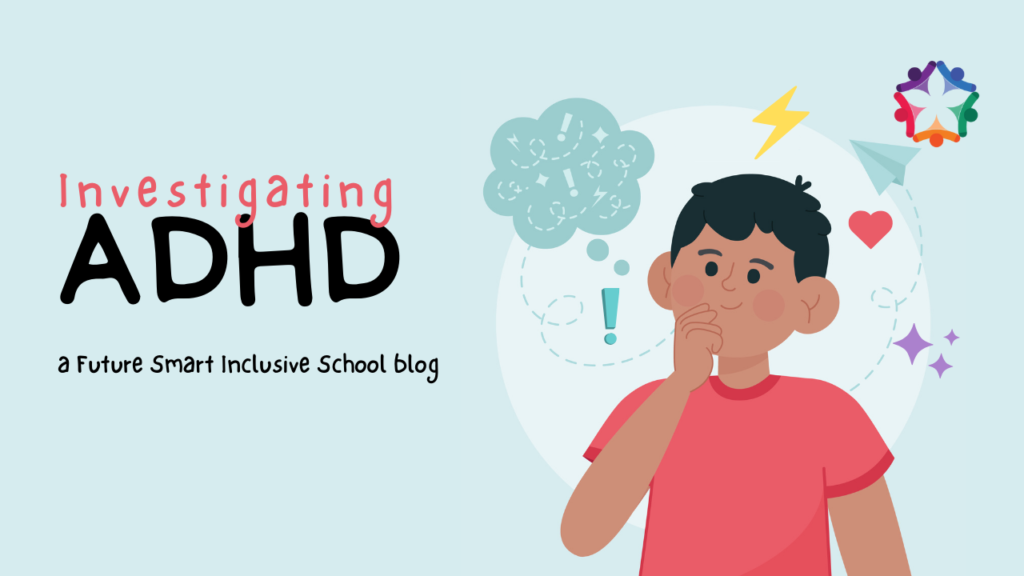Investigating ADHD
ADHD Awareness Month is commemorated every year in October. The purpose is to raise awareness about the disorder and to dispel common misconceptions.

Attention deficit hyperactivity disorder, widely known as ADHD, is a common neurodevelopmental disorder affecting children and adults. ADHD is a lifelong and debilitating disorder that impacts many aspects of life such as relationships, academic and professional achievements, and daily functioning. Children are born with it and cannot be “caught” like the flu.
ADHD – A brief glimpse of its history
The very first mentions of what appears to be ADHD today were recorded in 1798. A Scottish doctor noticed that some people were easily distracted and couldn’t focus on everyday activities. He commented that these symptoms appeared early in life.
Eminent paediatrician Sir George Fredrick Still was the first person to describe ADHD in 1902. However, the disorder wouldn’t be named for decades to come. He noted that some children with normal intelligence had mental conditions that made them impulsive and gave them poor attention span and self-control.
By 1932, two German doctors described “hyperkinetic disease”. They noted that children who showed symptoms were unable to sit still, had difficulty following instructions and rules, disturbed their classrooms and had trouble getting along with others.
The American Psychiatric Association (APA) first included hyperkinetic reaction of childhood in its Diagnostic and Statistical Manual of Mental Disorders (DSM) in 1968. in the 1980 edition, it was renamed to Attention Deficit Disorder (ADD). Then, in 1987, APA changed the name once more to attention deficit hyperactivity disorder (ADHD).
In 1994, APA issued the fourth edition of the DSM. This edition contained three different types of ADHD (mostly inattentive, mostly hyperactive and impulsive, and a combination of all three symptoms). The fourth edition was also the first to recognize that ADHD symptoms don’t necessarily go away with adulthood.
Today, the most recently published volume, the DSM-5 (2013), designated the three types of ADHD as “presentations” – how this disorder may affect lives. The experts also mentioned that symptoms can change over time.
What ADHD Looks Like in Children and Teenagers
A well-defined list of symptoms of ADHD in children and teenagers is available. The symptoms are usually noticeable before the age 6. They occur at home, school and any other situations. Children may have symptoms of both inattentiveness and hyperactivity and impulsiveness. Or they may have symptoms of just one of these types. What ADHD looks like can vary from person to person. It can also change over time. For example, children with ADHD may struggle with schoolwork and social interactions, while adults with ADHD may struggle with daily tasks, relationships and work.
We have listed down symptoms categorized by inattentiveness and hyperactivity and impulsiveness. Here is what to look out for:
Inattentiveness
Inattentiveness can be defined as difficulty focusing and concentrating. The main signs of inattentiveness are:
- short attention span
- being easily distracted
- having difficulty organising tasks
- being unable to complete tasks that are time-consuming or tedious
- careless mistakes (such as at school)
- forgetfulness or losing things
- unable to carry out instructions
- constantly changing activity or task
Hyperactivity and Impulsiveness
The main symptoms of hyperactivity and impulsiveness are:
- unable to sit still, especially when it is calm or quiet
- constantly fidgeting
- excessive physical movement
- unable to concentrate on tasks
- acting without thinking
- interrupting conversations
- talkative behaviour
- unable to wait their turn
- little or no sense of danger
Prevalence
ADHD is one of the most common developmental disorders affecting children. It is estimated that worwide, around 5% children have ADHD. Boys are at greater risk of having ADHD when compared to girls. That doesn’t mean girls don’t have it, because they do. Symptoms are carried forward into adulthood.
Best Ways to Deal with ADHD
ADHD doesn’t have a cure, but several effective treatments can help manage symptoms. These include:
Behavioural therapy: This type of therapy can help children with ADHD learn new skills and strategies for managing their symptoms. Approaches such as ABA therapy can be used to teach children with ADHD how to regulate their behaviour.
Lifestyle changes: Eating a balanced diet, getting regular exercise, and getting enough sleep can all help reduce ADHD symptoms. Establishing routines and structure in daily life is also helpful in manage symptoms.
Medication: All children with ADHD do not require medicines. Medicines such as Ritalin is prescribed by doctors only in severe cases.
Notable People with ADHD
While ADHD is lifelong and can be debilitating, it can be overcome by sheer tenacity and power of will and of course, the right kind of help. Michael Phelps, for example was diagnosed with it at a young age. His mother, a school teacher herself, focussed on her son’s strengths and signed him up for swimming. The rest, as they say, is history.
Here is a short list of famous people who are living with the disorder.
Athletes
Michael Phelps, Olympic swimmer
Simone Biles, Olympic gymnast
Terry Bradshaw, former NFL quarterback
Entertainment and Media
Justin Timberlake, musician and actor
Emma Watson, actress
Johnny Depp, actor
Channing Tatum, actor
Howie Mandel, comedian and TV host
James Carville, political commentator
Ty Pennington, TV host
Adam Levine, musician
David Blaine, magician
Mariette Hartley, actress
Business
Richard Branson, entrepreneur
Ingvar Kamprad, founder of Ikea
Parting Thoughts
Living with ADHD is not easy. It can be overwhelming at times as it significantly impacts everyday lives. However, no challenge is big enough if dealt with on time and with proper guidance. It is important to seek professional help if you or a loved one has red flags. This way, you may be able to learn how to manage symptoms and lead happy and healthy lives.




Leave a Reply